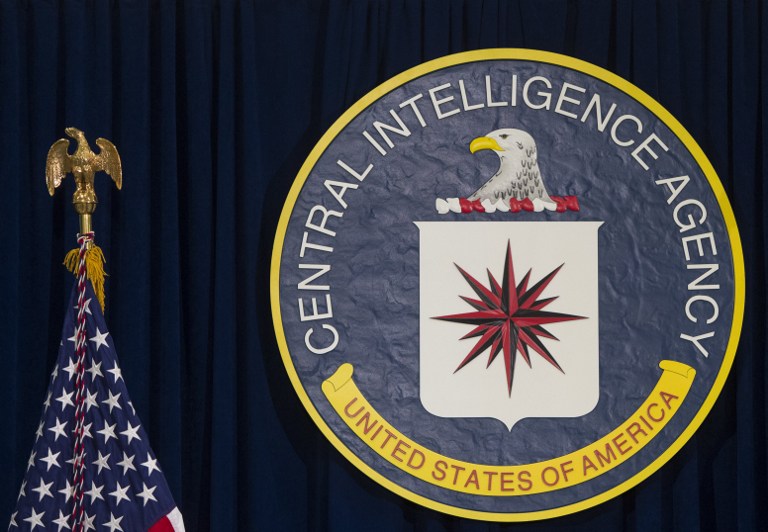The New York Times
By Charlie Savage
Washington-After the Central Intelligence Agency transferred Abu Zubaydah to the American military prison at Guantanamo Bay, Cuba, and he was brought before a panel of officers for a hearing in March 2007, he described in broken English how he had been tortured in the agency’s black-site prisons.
He said his body had shaken when he stood for hours, naked and shackled in a cold room and unable to shift his weight to an injured leg. He spoke of his humiliation at having to relieve himself in a bucket in front of other people, “like an animal.” And he described being waterboarded until he stopped breathing and required resuscitation.
“They shackle me completely, even my head; I can’t do anything,” Mr. Zubaydah said. “Like this, and they put one cloth in my mouth and they put water, water, water.” At the “last point before I die,” he said, interrogators stood the board back up and “make like this” — he made breathing noises — “again and again they make it with me, and I tell him, ‘If you want to kill me, kill me.’ ”
Mr. Zubaydah’s testimony was contained in newly declassified transcripts of military hearings for the CIA’s former prisoners. The government disclosed the accounts this week in response to a Freedom of Information Act lawsuit brought by the American Civil Liberties Union, which provided the documents to The New York Times.
Many details about the CIA’s torture program, including the treatment of Mr. Zubaydah, had already been made public, including in the Senate Intelligence Committee’s 500-page report released in December 2014. But those details were largely based on government memos. The newly available transcripts add first-person testimony to the growing historical record.
“At a time when some politicians are proposing that the torture program be resurrected, it’s crucial that the American public have access to these firsthand statements, and not only to the self-serving accounts offered by those who authorized the torture,” said Dror Ladin, an A.C.L.U. staff attorney.
Defenders of the CIA’s “enhanced interrogation” program say it produced information that saved lives. The Senate report, however, concluded that the program’s defenders had exaggerated the value of the information gleaned from it and understated its brutality. The presumptive Republican presidential nominee, Donald J. Trump, has proposed reviving and expanding such techniques.
The CIA started its black-site rendition, detention and interrogation program with the 2002 capture of Mr. Zubaydah, whom it mistakenly thought was a top leader in al-Qaeda. It started to shut down the program in 2006, after the Supreme Court issued a ruling about the Geneva Conventions that put agency interrogators in jeopardy of being prosecuted for war crimes.
That September, the Bush administration transferred detainees from prisons run by the CIA to Guantanamo Bay. After several months, each man received a hearing before a so-called combatant status review tribunal to establish whether they had been properly classified as “enemy combatants” subject to indefinite wartime detention.
The government released versions of some of the transcripts in 2009, but redacted the detainees’ descriptions of their treatment by the CIA.
In a previously censored passage, Mr. Zubaydah, who described making up fake terrorist plots to stop the abuse, claimed that an agency interrogator had apologized to him after the government realized it had misunderstood his role.
“After that, all they said to me was, ‘Sorry, we made a big mistake,’ ” he said.
On Wednesday, the CIA also posted dozens of documents that were subject to separate, overlapping Freedom of Information Act lawsuits by the A.C.L.U. and Vice News for memos listed in the footnotes of the Senate report. Most of the documents were heavily redacted beyond the portions quoted in the report, but there were a few new details.
For example, an unredacted passage in a memo from the CIA’s chief medical official included a line quoted in the Senate report, which said that Mr. Zubaydah had already started cooperating before being waterboarded and that the technique had produced no “time-perishable information which otherwise would have been unavailable.” But it also contained a sentence before that line that the Senate report had not quoted: “A psychologist/interrogator later said that waterboard use had established that AZ had no further information on imminent threats — a creative but circular justification,” the official wrote, using initials for Abu Zubaydah.
Several of the transcripts provided to The Times were from the hearings of detainees who are now facing war-crimes trials before a military commission at Guantánamo. In those cases, defense lawyers’ strategy has been to argue that their clients should not face the death penalty as mitigation for the fact that the government tortured them, so the transcripts may offer a preview of their eventual testimony.
One of those detainees is Abd al-Rahim al-Nashiri, who is accused of helping to plot the 2000 bombing of the Cole, an American destroyer, which killed 17 sailors. Mr. Nashiri was subjected to some of the most extreme abuse, according to the CIA’s inspector general, including waterboarding and having a gun racked and a power drill revved next to his head.
Asked at his hearing to describe the methods used on him, Mr. Nashiri listed many: being hung upside down for almost a month, nearly drowned, hit into a wall and forced to stand in a small box for a week so that his feet swelled. He repeatedly asked himself, “What else did they did?”
There is also a transcript of a statement by Khalid Shaikh Mohammed, the accused architect of the Sept. 11, 2001, attacks. In the midst of a lengthy discourse on the victims of war and the rule of law, which was previously disclosed, the transcript includes the following, previously censored passage.
“This is, you see, I have been tortured by CIA,” Mr. Mohammed said, holding out his wrists. “Nobody will believe me.”
